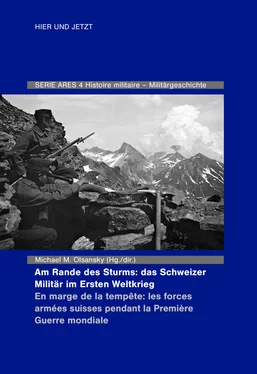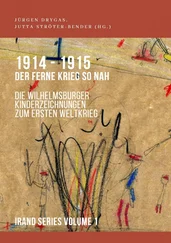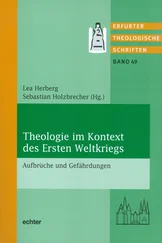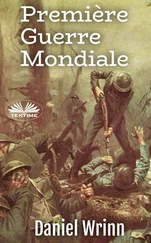30 Kurz, Dokumente, S. 57 f.
31 Aus der Thurgauer Zeitung vom 10. August 1915 in: Koch, Benjamin; Olsansky, Michael M. (Hg.): Das Thurgauer Füsilier Bataillon 74. Ein Stück Schweizer Militärgeschichte, Frauenfeld 2003, S. 26. Vgl. Küng, Karl: Das Glarner Bataillon. 125 Jahre Geb Füs Bat 85, Glarus 2001, S. 29.
32 Siehe dazu die Beiträge von Thiriet/Scheidegger und Moliterni/Scheidegger. Ausserdem dazu Jaun, Meuterei am Gotthard.
33 Vgl. dazu die Beurteilung des Hauptmanns Haller im Text von Dieter Wicki und jene des Hauptmanns Hasenfratz im Beitrag von Thiriet/ Scheidegger.
34 Militärorganisation, Art. 8.
35 Kurz, Dokumente, S. 34.
36 Als Standardwerk gilt nach wie vor Gautschi, Willi: Der Landesstreik 1918, Zürich 1968 sowie ders.: Dokumente zum Landesstreik 1918, Zürich 1971.
37 Vgl. Wild, Ueli: Zürich 1918. Ordnungsdiensteinsätze der Schweizer Armee im Frühjahr und im Sommer 1918 in Zürich, Frauenfeld 1987; Greminger, Thomas: Ordnungstruppen in Zürich. Der Einsatz von Armee, Polizei und Stadtwehr Ende November 1918 bis August 1919, Basel 1990; Zeller, René: Ruhe und Ordnung in der Schweiz. Die Organisation des militärischen Ordnungsdienstes von 1848 bis 1939, Bern 1990; Frey, Daniel: Vor der Revolution? Der Ordnungsdienst-Einsatz der Armee während des Landesstreiks in Zürich, Zürich 1998; Conca-Pulli, Pälvi: Soldats au service de l’ordre public. La politique de maintien de l’ordre intérieur au moyen de l’armée en Suisse entre 1914 et 1949, Neuenburg 2003.
38 Jaun, Militärgeschichte, S. 130. Vgl. auch Jaun; Straumann, Durch fortschreitende Verelendung zum Generalstreik?, ausserdem ders.: «Der Erste Weltkrieg und das Generalstreiks-Narrativ», Neue Zürcher Zeitung, 25. 9. 2014, S. 23.
39 Rossfeld, Roman; Koller, Christian; Studer, Brigitte (Hg.): Der Landesstreik. Die Schweiz im November 1918, Baden 2018.
40 Diesem Argument folgte an der Tagung von 2016 pointiert der zwischenzeitlich leider verstorbene René Zeller in seinem Beitrag «Den Bürgerkrieg vor Augen».
41 Zeller, Sonderegger, S. 106.
Kapitel 1: Internationales Spannungsfeld
Maartje Abbenhuis
On the Edge of the Storm?
Situating Switzerland’s Neutrality
in the Context of the First World War
Historians often conceptualise the First World War as a «total war», a conflict in which the totalising effects of warfare eroded the distinctions between civilians and soldiers and in which whole societies were seconded to the needs of the military-industrial complex. The conceptualisation is an appropriate one, but it begs the question: Where does it leave the war experiences of neutrals? Should we consider neutral countries like Switzerland marginal to the war, sitting, as the theme of this collection suggests, on the edge of the storm? This chapter asks questions of neutrality in the period before and during the First World War and argues that only by fully integrating the history of neutrality and neutrals into the history of warfare can we begin to comprehend the totality of the between 1914 and 1918 conflagration.
The historian Hugh Bichenko defines the term «total war» as pertaining to a conflict in which «the whole population and all the resources of the combatants are committed to complete victory and thus become legitimate military targets». 1In total war, the distinction between armed force and civilian population is either eradicated or becomes less clear. In total war, the principle that armed forces should only attack designated military-strategic sites erodes. Civilians become justifiable targets for the enemy, enabling their destruction and justifying increasingly violent behaviour towards them. Few wars in history meet the conditions of totality as Bichenko describes the concept. Thus, a «total war» for Bichenko is «a term to be used sparingly». 2The general consensus among military historians, however, is that the First World War is one such war. 3
If we accept Bichenko’s definition, the «totality» of the First World War was defined by the commitments of the belligerents to victory at any cost. By implication, only those societies actually at war could participate in the war’s totalisation. The belligerents were simultaneously the war’s perpetrators and its primary victims (the targets of their enemy’s total warfare campaigns). Bichenko’s definition leaves historians of neutrality in a quandary: How can we write the history of the First World War and acknowledge its totality for many (although not all) of the belligerent societies involved, and leave room for alternate war experiences?
Between 1914 and 1918, could we say that neutrals like Switzerland were also involved in «total war»? Were neutrals impacted by the «total war» waged by others? And, if so, how should we describe those neutral war experiences? The First World War was a globalised industrial conflagration from which almost no society escaped unscathed, be it neutral or belligerent. But how people were affected by the conflict differed substantially depending on their geographic location and their level of military involvement. The longer the war endured, the likelihood of a person being drawn directly into the war’s maelstrom of violence, revolution and upheaval increased exponentially.
I do not wish to revise the idea that the First World War was a «total war». The descriptor is a perfect adjective for the 1914–1918 conflict. But I do want to argue that by looking only at the belligerents to make sense of the parameters and impacts of the conflict as it totalised, historians miss a vital piece of the story. For the First World War did not start out as a «total war». It developed into that reality over time: as an increasing number of states ended their neutrality and joined the war and as the great power belligerents expanded their military violence, heightened their economic warfare, militarised the world’s seas and oceans and devastated the global economy. My argument is that we can only fully understand the totality of the First World War if we integrate the history of neutrals and neutrality in it and acknowledge that as non-belligerents, neutrals were key actors in the globalisation of the war and its violence. 4
The Dutch professor of military history, Wim Klinkert, grapples with similar questions. He argues that the vital distinction between a neutral state and a belligerent one has to be maintained: that the difference between a belligerent being «at war» militarily and a neutral «waiting» for (or «expecting») to become involved in a military conflict is essential. He argues that successful neutrals had a war experience but that their war experience was distinctly different from that of the belligerents because the neutrals did not enter into combat, suffered very few military casualties and endured limited military damage. At best, neutrals were indirect military agents in the war and should not be classified as the war’s primary victims. They experienced the military impact of the conflict either tangentially or as vicarious witnesses. The war existed for them but only at a distance. As such, Klinkert argues that for the neutral Dutch, the First World War was not a «total war». 5
Instead, Klinkert ascribes the term «total mobilisation» to the war experiences of the Dutch, retooling Ernst Jünger’s idea of totale Mobilmachtung to make his case. 6Klinkert is very careful to stress that the Dutch endured many of the same wartime developments and privations as civilians in belligerent societies, including the militarisation of everyday life (and the mobilisation of large numbers of citizen-soldiers), the imposition of restrictive rationing and distribution measures, heightened state control over the lives of citizens, an influx of refugees and foreigners and high levels of economic insecurity. But the Dutch did not go to war. They did not have to deal with the grief of innumerable military casualties. They did not see their cities bombed into oblivion, their homes torched or their lives and livelihoods end. Only rarely did they experience the inherent violence of total war (for example, when a belligerent aeroplane accidentally dropped a bomb on a Dutch village, when a loosened sea mine exploded on a Dutch beach, or when a Dutch fishing vessel was lost at sea due to military operations conducted there). For Klinkert, then, the Netherlands’ neutrality differentiated the country from the rest of wartime Europe, indicating that the Dutch had a different kind of war experience. Klinkert agrees with Bichenko: total war cannot apply to a neutral.
Читать дальше












